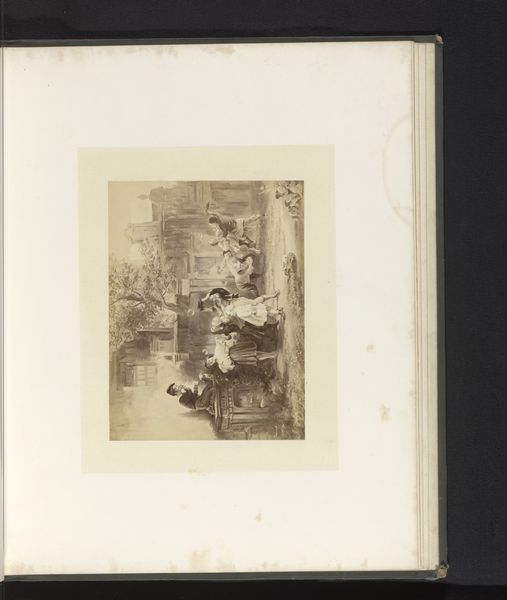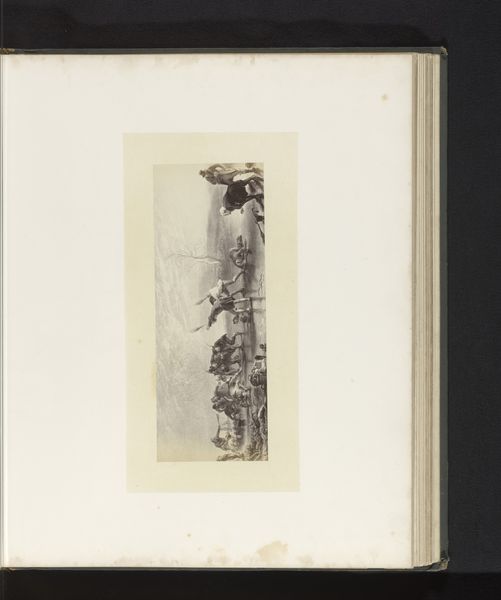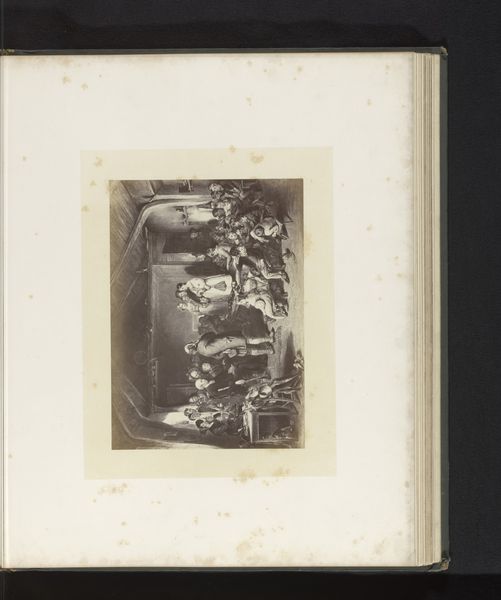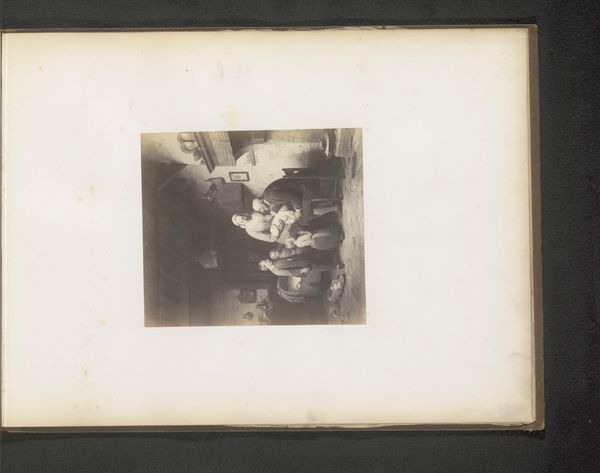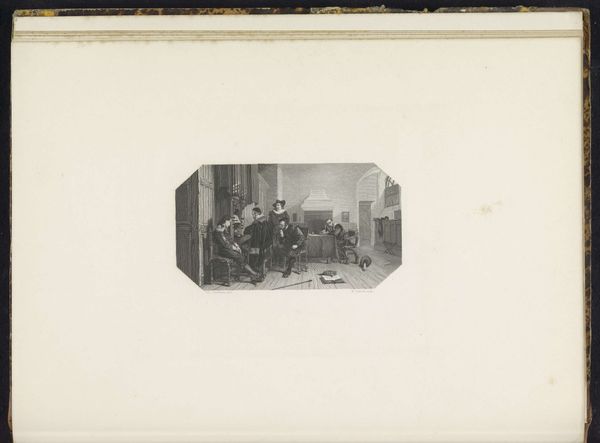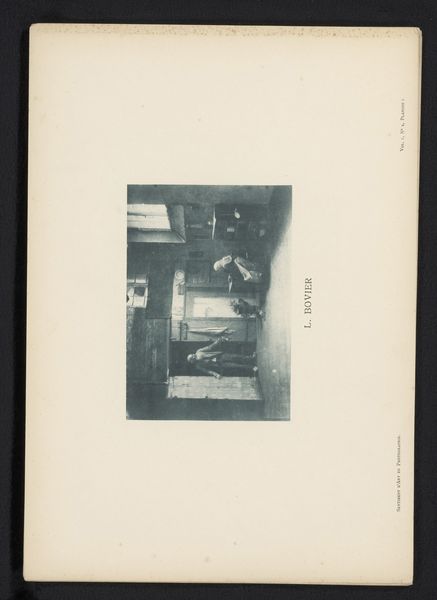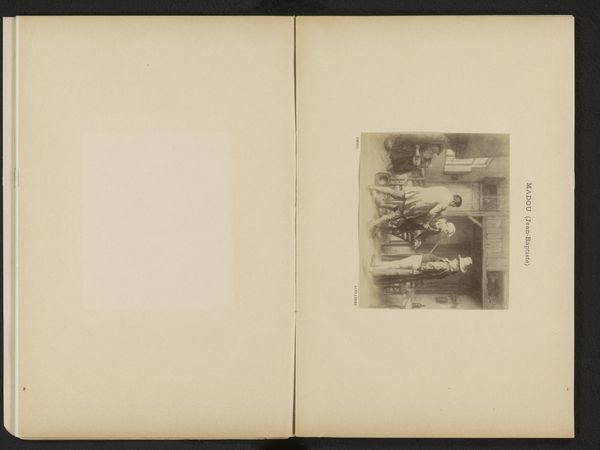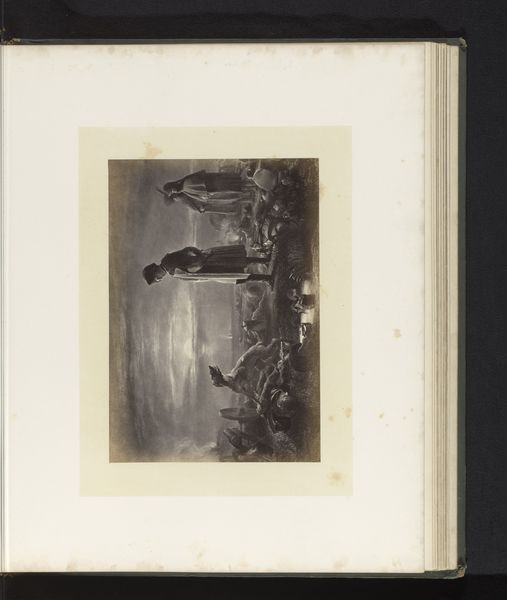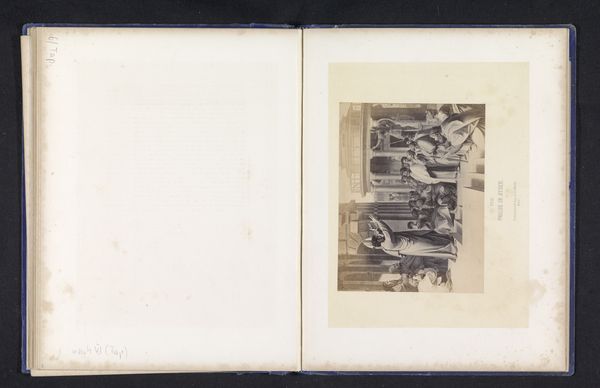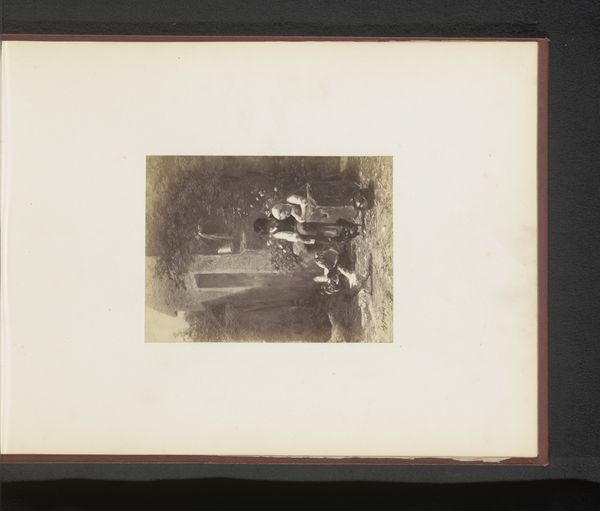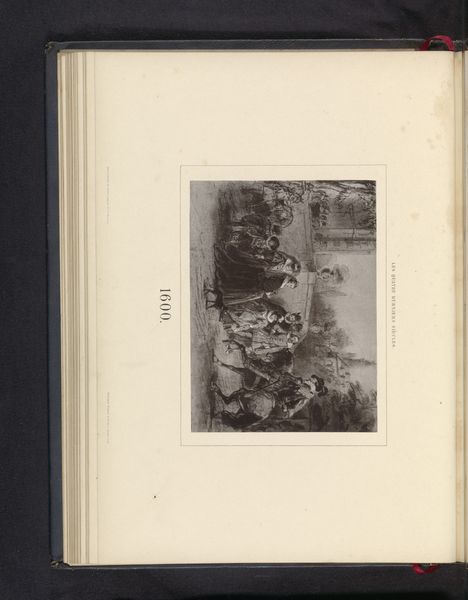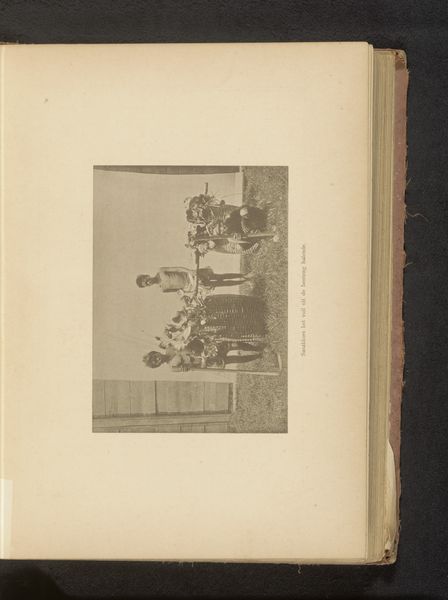
Fotoreproductie van een gravure van A Schule Scailin', naar het schilderij door Sir George Harvey before 1870
0:00
0:00
print, photography, gelatin-silver-print
#
pale palette
#
muted colour palette
# print
#
white palette
#
photography
#
muted colour contrast
#
gelatin-silver-print
#
muted colour
#
genre-painting
#
academic-art
Dimensions: height 147 mm, width 250 mm
Copyright: Rijks Museum: Open Domain
Curator: The subdued tonality immediately sets a somber mood. What catches your eye? Editor: A sort of enclosed drama, wouldn't you agree? The figures are gathered tightly; the grayscale tones lending the scene an air of secrecy, almost confinement. I find the scene strangely muted. Curator: It’s fascinating that you pick up on the closed-in feeling. This gelatin-silver print, "Fotoreproductie van een gravure van A Schule Scailin', naar het schilderij door Sir George Harvey", by Thomas Annan before 1870, captures a genre painting in reproduction. Note how the print’s subtle gradients render depth and texture but equally soften any dramatic high contrast. Editor: And what of this subject, of a kind of informal school room? Who were such sentimental paintings for? Curator: Genre paintings held significant social and political weight at the time, you see, presenting idealised views of everyday life intended to promote social cohesion. The iconography would have resonated with those Victorian audiences through accessible narrative imagery, conveying specific virtues like diligence, modesty, respect for social roles, and education. Editor: Indeed. Note the subdued palette—whites, grays—seems so very Victorian in its restraint. Even though reproduced via photography, one could see the cultural impulse towards moral uplift. Were photographs like this disseminated for propaganda purposes, for schoolrooms? Curator: Well, perhaps not overt propaganda. It’s a commercial object. Photographic reproduction offered increased access to painting, certainly influencing a broader public through increased circulation, so it carries weight on both social and symbolic level. I read the scene more broadly in terms of domestic life: an exercise in storytelling within the household, within communities. Editor: I concede it would be found framed in many domestic parlours of the day, influencing tastes and styles. In fact, such photographic reproductions helped establish conventions of academic art. Curator: That's an excellent point, influencing tastes and solidifying a certain vision of appropriate artistic subjects. Editor: A fitting visual artifact to showcase evolving notions about class and education. Thanks for shining a light. Curator: Indeed. Understanding its symbolic weight encourages a far greater engagement with this subtle historical document.
Comments
No comments
Be the first to comment and join the conversation on the ultimate creative platform.
